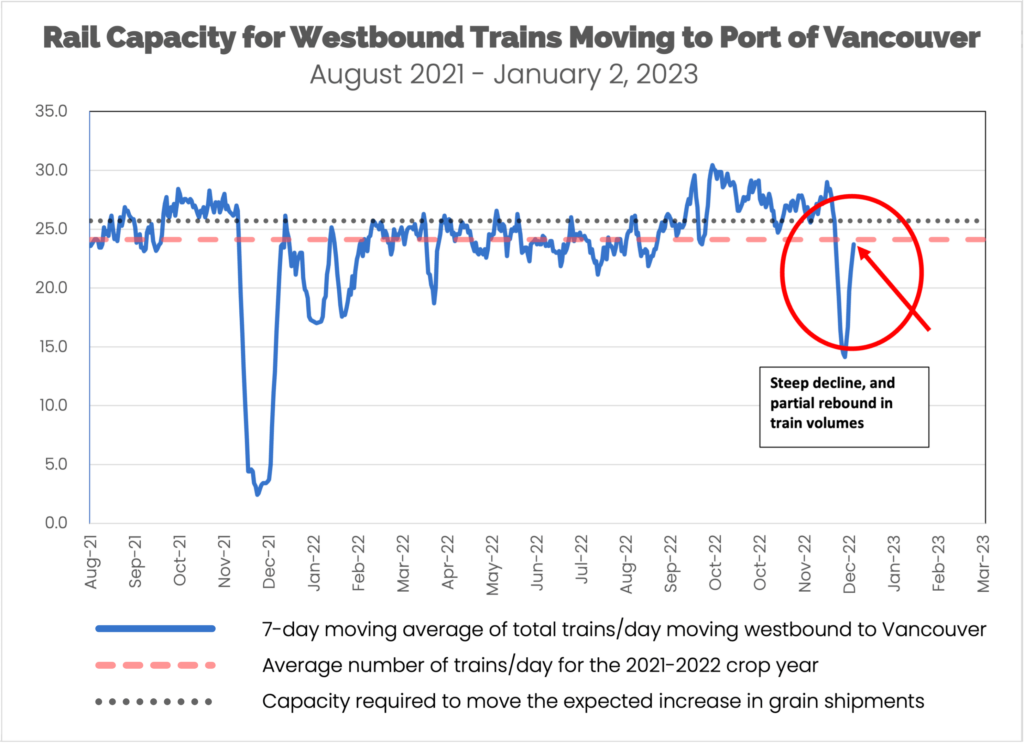Rail Capacity Report – 12/27/2022-1/2/2023
We’ve been reporting on the Grain movement in Canada to the Port of Vancouver for the last fifteen weeks. For most of this period, the railways have appeared to be doing well with westbound movements toward Vancouver. However, during the holiday season, there was a significant decline in train volumes. Specifically, the seven-day-average number of trains westbound toward Vancouver fell from 26.6 trains/day as of 12/19/2022 to 14.4 trains/day as of 12/26/2022, and only partially rebounded to 23.7 trains/day as of 1/2/2023. (For comparison, as shown on the January 2022 portion of the rail capacity chart, the disruption to rail operations related to the 2021 holiday season was timed a little later and had a different trajectory, but was similar in overall impact, with average volumes dropping to about 17 trains/day for approximately a 10-day period in January of 2022.)

Observations for Holiday Season 12/20/2022-1/2/2023:
- The 7-day moving average number of trains moving westbound past Chilliwack was 14.4 trains/day as of 12/26/2022 and 23.7 trains day as of 1/2/2023, both below the average of 25.7 trains/day that is required to move a typical grain harvest and the typical volume of other commodities.
- The moving average number of trains/day was at or below 25.7 trains/day for all 14 days during the past two weeks. In addition to the holiday, a reduction in demand likely also contributed to the reduced train volume.
We estimate that about 5 grain trains/day are required to move the expected grain harvest. The railways moved an average of 4.0 grain trains/day during the week ending 12/26/2022, and 6.1 grain trains/day during the week ending 1/2/2023, close to the required average for the holiday season overall.
As of 1/2/2023, rail traffic in three of the seven categories we track was above its long-term average level (grain at 6.1 trains/day, manifest at 3.9 trains/day, and petroleum at 3.0 trains/day.) Other traffic was near its long-term average level of 1.0 trains/day. Intermodal traffic (5.0 trains/day), coal (3.6 trains/day), and potash (1.1 trains/day) were all below their long-term average levels for the eighth week in a row.
We will continue to monitor the corridor to Vancouver during the grain season and provide updates on trends we’re seeing.
Subscribe to our blog for updates every Wednesday.
